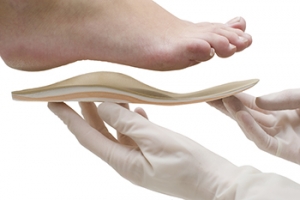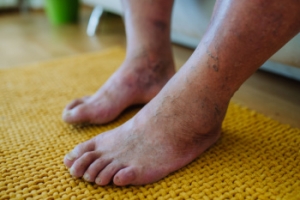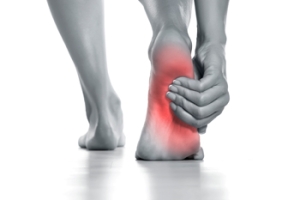
Different Types of Custom Orthotics
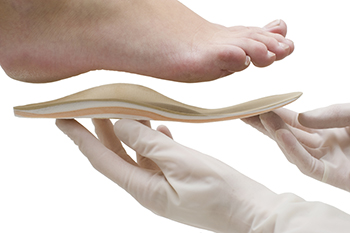 Orthotics are available in various types, each designed to address specific foot issues and provide optimal support. The five most common types of orthotics are functional or rigid, soft or accommodative, orthotics for fragile feet, orthotics for sensitive feet, and sports-specific orthotics. Functional or rigid orthotics are made from firm materials like plastic or carbon fiber, and they correct abnormal foot motion, providing stability and relieving pain in the legs, thighs, and lower back. Soft or accommodative orthotics are crafted from cushioned materials to absorb shock and alleviate pressure, making them ideal for individuals with diabetes or arthritis. Orthotics for fragile feet are designed for those with weakened or compromised foot structures, offering gentle support and protection. Sensitive orthotics cater to those with hypersensitive feet, providing comfort without irritation. Additionally, sports-specific orthotics are tailored for athletes, enhancing performance by improving alignment and reducing the risk of injury. Custom-made orthotics are the best option, as they fit an individual's unique foot structure and needs. Schedule an appointment with a podiatrist for an assessment of your condition and a recommendation for a suitable orthotic type for you.
Orthotics are available in various types, each designed to address specific foot issues and provide optimal support. The five most common types of orthotics are functional or rigid, soft or accommodative, orthotics for fragile feet, orthotics for sensitive feet, and sports-specific orthotics. Functional or rigid orthotics are made from firm materials like plastic or carbon fiber, and they correct abnormal foot motion, providing stability and relieving pain in the legs, thighs, and lower back. Soft or accommodative orthotics are crafted from cushioned materials to absorb shock and alleviate pressure, making them ideal for individuals with diabetes or arthritis. Orthotics for fragile feet are designed for those with weakened or compromised foot structures, offering gentle support and protection. Sensitive orthotics cater to those with hypersensitive feet, providing comfort without irritation. Additionally, sports-specific orthotics are tailored for athletes, enhancing performance by improving alignment and reducing the risk of injury. Custom-made orthotics are the best option, as they fit an individual's unique foot structure and needs. Schedule an appointment with a podiatrist for an assessment of your condition and a recommendation for a suitable orthotic type for you.
If you are having discomfort in your feet and would like to try orthotics, contact one of our podiatrists from Central Ohio Comprehensive Foot Care. Our doctors can provide the care you need to keep you pain-free and on your feet.
What Are Orthotics?
Orthotics are inserts you can place into your shoes to help with a variety of foot problems such as flat feet or foot pain. Orthotics provide relief and comfort for minor foot and heel pain but can’t correct serious biomechanical problems in your feet.
Over-the-Counter Inserts
Orthotics come in a wide variety of over-the-counter inserts that are used to treat foot pain, heel pain, and minor problems. For example, arch supports can be inserted into your shoes to help correct overarched or flat feet, while gel insoles are often used because they provide comfort and relief from foot and heel pain by alleviating pressure.
Prescription Orthotics
If over-the-counter inserts don’t work for you or if you have a more severe foot concern, it is possible to have your podiatrist prescribe custom orthotics. These high-quality inserts are designed to treat problems such as abnormal motion, plantar fasciitis, and severe forms of heel pain. They can even be used to help patients suffering from diabetes by treating foot ulcers and painful calluses and are usually molded to your feet individually, which allows them to provide full support and comfort.
If you are experiencing minor to severe foot or heel pain, it’s recommended to speak with your podiatrist about the possibilities of using orthotics. A podiatrist can determine which type of orthotic is right for you and allow you to take the first steps towards being pain-free.
If you have any questions please contact one of our offices located in Delaware and Westerville, OH . We offer the newest diagnostic and treatment technologies for all your foot and ankle needs.
Foot Orthotics
Orthotics are shoe inserts that are meant to correct an irregular walking gait or provide cushioning to the feet. Orthotics come in a variety of different models and sizes, including over-the-counter and customizable variants. Customizable orthotics can be shaped and contoured to fit inside a specific shoe and are typically prescribed through a podiatrist who specializes in customized footwear and orthotics design and management.
Orthotics are beneficial because they can help prevent injuries from occurring and provide cushioning to keep pain levels down to a minimum. They also allow for the correct positioning of the feet. Orthotics can act as shock absorbers to help remove pressure from the foot and ankle. Therefore, orthotics can make bodily movements, such as walking and running, become more comfortable as well as help prevent the development of certain foot conditions.
Orthotics alleviate pain and make the foot more comfortable by slightly altering the angle at which the foot strikes the ground surface, therefore controlling the movement of the foot and ankle. Orthotics come in different variants and can be made of various materials. To determine what type of orthotic is most suited to your feet and your needs, it is best to consult your podiatrist. He or she will be able to recommend a type of orthotic that can help improve your foot function or prescribe a custom orthotic to best fit your feet.
Professional Foot Corn Removal
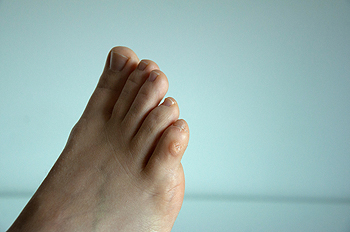 Corns are hard, thickened areas of skin that form on the feet in response to pressure and friction. They typically develop on the toes or the soles of the feet. These skin lesions can cause discomfort and pain, particularly when pressure is applied, such as while wearing shoes. Although corns form to protect the skin, they often grow too thick and need to be managed. A podiatrist, or foot doctor, can professionally remove corns through several methods. One common technique is carefully paring down the thickened skin using a scalpel. This should only be done by a professional to avoid injury. For persistent corns, a podiatrist may also use salicylic acid treatments to chemically pare down the excess skin. Additionally, custom orthotics or padding might be recommended to relieve pressure and prevent the recurrence of corns. In severe cases, a podiatrist may suggest surgical correction of the underlying bone structure that causes the friction. If you are struggling with foot corns, it is suggested that you visit a podiatrist for personalized and safe treatment.
Corns are hard, thickened areas of skin that form on the feet in response to pressure and friction. They typically develop on the toes or the soles of the feet. These skin lesions can cause discomfort and pain, particularly when pressure is applied, such as while wearing shoes. Although corns form to protect the skin, they often grow too thick and need to be managed. A podiatrist, or foot doctor, can professionally remove corns through several methods. One common technique is carefully paring down the thickened skin using a scalpel. This should only be done by a professional to avoid injury. For persistent corns, a podiatrist may also use salicylic acid treatments to chemically pare down the excess skin. Additionally, custom orthotics or padding might be recommended to relieve pressure and prevent the recurrence of corns. In severe cases, a podiatrist may suggest surgical correction of the underlying bone structure that causes the friction. If you are struggling with foot corns, it is suggested that you visit a podiatrist for personalized and safe treatment.
If you have any concerns regarding your feet and ankles, contact one of our podiatrists of Central Ohio Comprehensive Foot Care. Our doctors will treat your foot and ankle needs.
Corns: What Are They? and How Do You Get Rid of Them?
Corns can be described as areas of the skin that have thickened to the point of becoming painful or irritating. They are often layers and layers of the skin that have become dry and rough, and are normally smaller than calluses.
Ways to Prevent Corns
There are many ways to get rid of painful corns such as wearing:
- Well-fitting socks
- Comfortable shoes that are not tight around your foot
- Shoes that offer support
Treating Corns
Treatment of corns involves removing the dead skin that has built up in the specific area of the foot. Consult with Our doctors to determine the best treatment option for your case of corns.
If you have any questions please feel free to contact one of our offices located in Delaware and Westerville, OH . We offer the newest diagnostic and treatment technologies for all your foot and ankle needs.
Everything You Need to Know About Corns
Corns are hard and thick areas of skin that form as a result of constant rubbing, friction, or pressure on the skin. They are patches of dead skin with a small plug toward the center. They may appear on the tops and sides of toes and can make walking painful.
Soft corns are typically thinner with a white color and rubbery texture. Soft corns tend to appear between the toes. Seed corns are another type of corn that appear in clusters and can be tender if they are on a weight-bearing part of the foot. Seed corns usually appear on the bottom of the foot and are likely caused by a blockage in sweat ducts.
While corns and calluses are somewhat similar, calluses are a bit different. Calluses are a patch of dead skin that can occur anywhere on the body. In comparison to corns, calluses are usually a bit larger in size. However, both corns and calluses are caused by increased friction on the skin.
There are some risk factors that may increase your chances of developing corns and calluses. If you have bunions, hammertoe, or a bone spur, you are more likely to develop a corn or callus on your foot.
While Corns and Calluses tend to disappear when the friction to the affected area ceases, the help of a podiatrist may be useful in the removal process. It is important to remove the dead skin around the area and this may be done in a few different ways. Moisturizing creams may be helpful in softening and removing the dead skin around the callus. You should never use razors or other pedicure equipment to remove your corns. Doing this may worsen your corn or callus and cause infection.
In some cases, corns and calluses may be caused by abnormal foot structure or walking motion. In such a case, you should seek a podiatrist’s assistance in order to correct the issue.
What are Achilles Tendon Injuries
The Achilles tendon is the strongest tendon in the human body. Its purpose is to connect the lower leg muscles and calf to the heel of the foot. This tendon is responsible for facilitating all types of movement, like walking and running. This tendon provides an enormous amount of mobility for the body. Any injuries inflicted to this tissue should be immediately brought up with a physician to prevent further damage.
The most common injuries that can trouble the Achilles tendon are tendon ruptures and Achilles tendinitis. Achilles tendinitis is the milder of the two injuries. It can be recognized by the following symptoms: inflammation, dull-to-severe pain, increased blood flow to the tendon, thickening of the tendon, and slower movement time. Tendinitis can be treated via several methods and is often diagnosed by an MRI.
An Achilles tendon rupture is trickier to heal, and is by far the most painful injury. It is caused by the tendon ripping or completely snapping. The results are immediate and absolutely devastating, and will render the patient immobile. If a rupture or tear occurs, operative and non-operative methods are available. Once the treatment begins, depending on the severity of the injury, recovery time for these types of issues can take up to a year.
Simple preventative measures can be taken as a means to avoid both injuries. Prior to any movement, taking a few minutes to stretch out the tendon is a great way to stimulate the tissue. Calf raises, squats, leg curls, leg extensions, leg raises, lunges, and leg presses are all suggested ways to help strengthen the lower legs and promote Achilles tendon health.
Many problems arise among athletes and people who overexert themselves while exercising. Problems can also happen among those who do not warm up properly before beginning an activity. Proper, comfortable shoes that fit correctly can also decrease tendon injuries. Some professionals also suggest that when exercising, you should make sure that the floor you are on is cushioned or has a mat. This will relieve pressure on the heels. A healthy diet will also increase tendon health.
It is very important to seek out a podiatrist if you believe you have an injury in the Achilles region. Further damage could result in severe complications that would make being mobile difficult, if not impossible.
Foot Pain
Our feet are arguably the most important parts of our bodies because they are responsible for getting us from place to place. However, we often don’t think about our feet until they begin to hurt. If you have pain in your feet, you need to first determine where on the foot you are experiencing it to get to the root of the problem. The most common areas to feel pain on the foot are the heel and the ankle.
Heel pain is most commonly attributed to a condition called plantar fasciitis. Plantar fasciitis occurs when the plantar fascia, which is the band of tough tissue connecting the heel bone to the toes becomes inflamed. Plantar fasciitis pain is usually worse in the morning, and it tends to go away throughout the day. If you have plantar fasciitis, you should rest your foot and do heel and foot muscles stretches. Wearing shoes with proper arch support and a cushioned sole has also been proven to be beneficial.
Some common symptoms of foot pain are redness, swelling, and stiffness. Foot pain can be dull or sharp depending on its underlying cause. Toe pain can also occur, and it is usually caused by gout, bunions, hammertoes, ingrown toenails, sprains, fractures, and corns.
If you have severe pain in your feet, you should immediately seek assistance from your podiatrist for treatment. Depending on the cause of your pain, your podiatrist may give you a variety of treatment options.
Salvaging Limbs and Preserving Mobility in Diabetic Patients

For individuals with diabetes, limb salvage is a critical aspect of managing the condition and maintaining quality of life. Diabetes can lead to complications such as peripheral artery disease and neuropathy, increasing the risk of foot ulcers and infections that may ultimately require limb amputation if left untreated. To salvage limbs, implementing proactive measures is essential. Regular foot exams by a podiatrist can identify potential issues early. Diabetic patients should prioritize foot care, including daily inspection, proper hygiene, and moisturizing to prevent dry skin. Wearing well-fitted shoes and avoiding walking barefoot can also reduce the risk of injuries. Managing blood sugar levels through medication, diet, and exercise is critical in preserving vascular health and nerve function. Any foot wounds should receive immediate attention, with proper cleaning and dressing to promote healing and prevent infection. By prioritizing preventive care and early intervention, diabetic patients can minimize the risk of limb loss and maintain mobility for a better quality of life. If you have diabetes, it is strongly suggested that you are under the care of a podiatrist who can help you to manage this condition and guide you toward important tactics that may help to salvage damaged limbs.
Diabetic Limb Salvage
Diabetic limb salvage can be an effective way in preventing the need for limb amputation. If you have a foot ulcer and diabetes, consult with one of our podiatrists from Central Ohio Comprehensive Foot Care. Our doctors will assess your condition and provide you with quality foot and ankle treatment.
What Is Diabetic Limb Salvage?
Diabetic limb salvage is the attempt of saving a limb, such as the foot, that has an infected ulcer, from amputation. Podiatrists also try to make sure that there is enough function in the foot after the salvage that it is still usable. Those with diabetes experience poor blood circulation, which prevents proper healing of an ulcer. If the ulcer is left uncheck, it could become infected, which could result in the need for amputation.
Diabetes is the number one cause of non-traumatic amputations in the United States. Amputation has been found to lead to higher mortality rates. This translates into higher healthcare costs, and a reduced quality of life and mobility for amputees. Podiatrists have attempted to increase the prevalence of limb salvage in an attempt to solve these issues.
Diagnosis and Treatment
Limb salvage teams have grown in recent years that utilize a number of different treatments to save the infected limb. This includes podiatrists that specialize in wound care, rehabilitation, orthotics, and surgery. Through a combination of these methods, limb salvage has been found to be an effective treatment for infected limbs, and as an alternative to amputation. Podiatrists will first evaluate the potential for limb salvage and determine if the limb can be saved or must be amputated.
If you have any questions, please feel free to contact one of our offices located in Delaware and Westerville, OH . We offer the newest diagnostic and treatment technologies for all your foot care needs.
Diabetic Limb Salvage
Limb salvage is a procedure that involves saving a lower extremity from amputation. In podiatry, limb amputation often occurs as a result of diabetes. The fundamental goal of limb salvage is to restore and maintain stability and movement of the affected lower extremity.
The procedure typically involves removing the diseased tissue and a small portion of the surrounding healthy tissue, as well as the removal of any affected bone if necessary. If bone is removed it is then replaced with prostheses, or synthetic metal rods or plates, or grafts from either the patient’s body or a donor. Limb salvage is typically the preferred choice of procedure over amputation, as the procedure preserves both the patient’s appearance and allows for the greatest possible degree of function in the affected limb.
Upon diagnosis and determining that limb salvage is the appropriate treatment, the podiatrist may enlist the help of a physical and/or occupational therapist to prepare the patient for surgery by introducing various muscle-strengthening, walking, and range of motion exercises. Such exercises may be continued as rehabilitation post-procedure.
Addressing Foot Pain
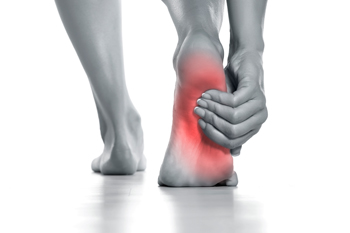
Foot pain comes in various forms, each signaling potential underlying issues that should not be disregarded. Plantar fasciitis, a common cause of heel pain, results from inflammation of the plantar fascia ligament, often due to overuse or improper footwear. Morton's neuroma, characterized by a sharp, burning sensation in the ball of the foot, stems from the thickening of the tissue around a nerve, typically caused by pressure or irritation. Bunions, hallux rigidus, and stress fractures are additional examples of foot conditions that can cause discomfort and affect mobility. Ignoring foot pain can lead to exacerbated symptoms, decreased quality of life, and even chronic conditions that require more invasive treatments. Proper diagnosis and timely intervention are essential for addressing foot pain and preventing long-term complications. Consulting a podiatrist can help identify the underlying causes and develop an effective treatment plan to alleviate discomfort and promote foot health. If you have any foot pain, it is suggested that you confer with this type of doctor who can provide a diagnosis and treatment.
Foot Pain
Foot pain can be extremely painful and debilitating. If you have a foot pain, consult with one of our podiatrists from Central Ohio Comprehensive Foot Care. Our doctors will assess your condition and provide you with quality foot and ankle treatment.
Causes
Foot pain is a very broad condition that could be caused by one or more ailments. The most common include:
- Bunions
- Hammertoes
- Plantar Fasciitis
- Bone Spurs
- Corns
- Tarsal Tunnel Syndrome
- Ingrown Toenails
- Arthritis (such as Gout, Rheumatoid, and Osteoarthritis)
- Flat Feet
- Injury (from stress fractures, broken toe, foot, ankle, Achilles tendon ruptures, and sprains)
- And more
Diagnosis
To figure out the cause of foot pain, podiatrists utilize several different methods. This can range from simple visual inspections and sensation tests to X-rays and MRI scans. Prior medical history, family medical history, and any recent physical traumatic events will all be taken into consideration for a proper diagnosis.
Treatment
Treatment depends upon the cause of the foot pain. Whether it is resting, staying off the foot, or having surgery; podiatrists have a number of treatment options available for foot pain.
If you have any questions, please feel free to contact one of our offices located in Delaware and Westerville, OH . We offer the newest diagnostic and treatment technologies for all your foot care needs.





